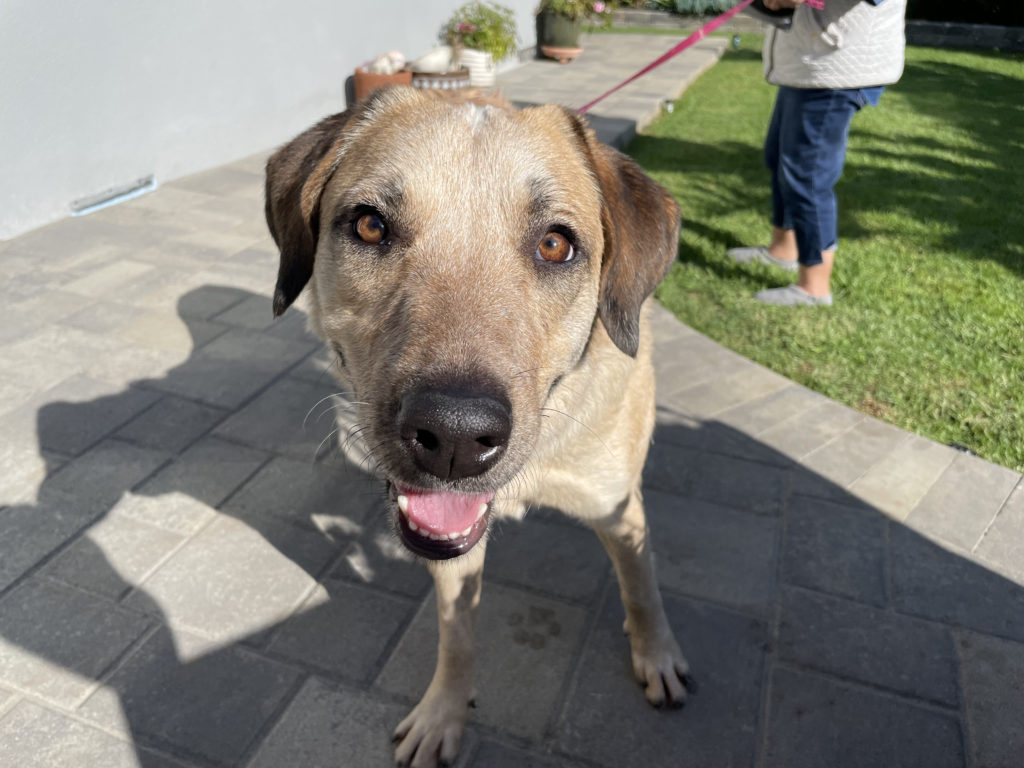Teaching a Dog to Stop Pulling on the Leash in Cheviot Hills
By: David Codr
Published Date: December 11, 2021
For today’s Cheviot Hills in-home dog training session, we worked with Australian cattle dog mix Chelsea, sharing tips to get her to stop pulling on the leash.
We started off the session by covering a number of dog behavior basics. Many people inadvertently train their dogs to do the opposite of what they intend to do. Understanding how to use marker words, when to introduce command cues, teaching dogs how to politely ask for attention and create motivation for them to behave (Celebrating) the way that we want are all important parts of a healthy leader follower dynamic.
There were a couple of times throughout the session that I started to wonder if Chelsea had some visual or hearing problems. She seemed to not be able to follow treats that were tossed and sometimes was so engrossed in what she was doing that it gave the appearance that she was deaf. Her guardians are going to speak to her vet about this to make sure, but it’s possible she just isn’t the most motivated dog when it comes to directions. A lot of the tips we shared in the session should help with that.
In particular, two techniques that I have been recommending for years will be really beneficial. Petting with a purpose, which involves asking the dog to do something that it knows how to do before you pet it or give it attention is a great way to help motivate the dog to want to listen to you.
I also went over what I call, “Celebrating,” a technique that many dog trainers referred to as capturing. Essentially this technique involves saying the marker word and then petting your dog every time it offers you a desirable behavior like sitting, laying down, coming to you or looking at you; without you asking for it. Observing the dog and giving it attention in a timely manner when it offers behaviors that you like is a great way to motivate the dog to continue offering those behaviors.
Next we were ready to address Chelsea‘s habit of pulling on the leash. Many people get frustrated when their dogs pull on the leash and then instinctively pull back against the dog’s pull. Unfortunately this is one of the common mistakes that causes dogs to pull on the leash even more due to their opposition reflex.
I made sure to point out the importance of allowing a dog to sniff. Most people walk their dogs to burn energy but try to prevent the dog from sniffing so they make faster progress. But letting the dogs sniff as long as it safe to do so it’s a great way to help them burn more energy and feel more relaxed and enjoy their walks.
How to Stop a Dog From Pulling on the Leash
To stop a dog from pulling on the leash, you need to first condition it to stop putting pressure on the leash. The next step is to reward it when it is walking in the position you want, then gradually increase the number of steps before delivering the treat. The key is to practice in a quiet environment to help the dog develop the skill set first, then practice frequently while gradually increasing the level of difficulty. This is one of the key secrets of teaching a dog to stop pulling on its leash.
I handed my camera to one of the guardians so that I could share some tips to train a dog to walk with a loose leash. If your dog pulls on the leash when on walks, you should check out the free positive dog training video below.
It was great to see how quickly Chelsea picked things up. Within a couple of minutes she was walking next to me with a nice loose leash for several steps in a row. In order for her guardians to get the same (and better) results they will need to practice these exercises a few times a day in short (1-3 minute), successful practice sessions that progressively become more challenging. I recommendd that her guardians spend a solid minute afterwords rubbing her belly, scratching her butt or throwing the ball. This is a simple trick to motivate a dog to enjoy their training as it always ends with something fun and enjoyable.
Practcing this often (3-6 times a day) in short practice sessions will establish the foundation for loose leash walking. Once they can walk her around the yard when only needing to treat one or twice, they can start to practice in the front yard. When they transition into a busier environment, they may need to go back to treating for fewer steps, thats ok. The main thing is to caputre momentum, laying one succesful practice session on top of another; building towards more steps between treats. This practice, comined by letting her stop to sniff often, will create a wonderful couple of classrooms where practice meets reality setting everyone up for success.
Id also like the guardians to get into a habit of saying “Lets go” each time they start walking. This is an easy way to create an effective cue t0 get the dog back to walking again.
To help the guardians remember all the positive dog training tips we shared in this in-home Cheviot Hills dog training session, we recorded roadmap to success video that you check out below.
Categorized in: Dog Behavior


